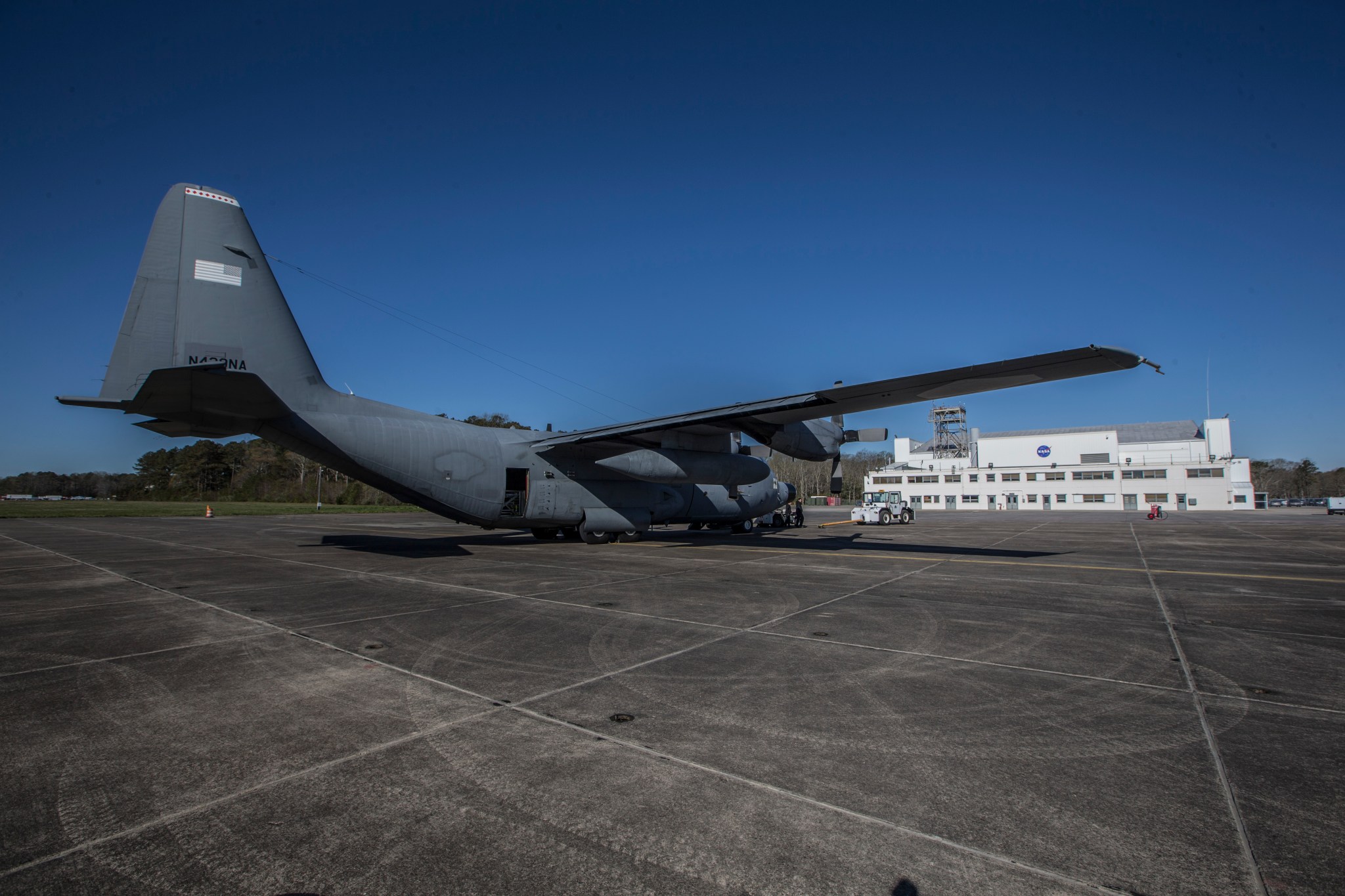NASA aircraft based at the Wallops Flight Facility will support field experiments this year from the United States to Canada to Africa examining changes in our planet and potential impacts from human activity.
While Earth science field experiments are nothing new for NASA, the next six months will be a particularly active period with eight major new campaigns taking researchers around the world on a wide range of science investigations.
Two C-130’s and a P-3B aircraft at Wallops are playing key roles in three of these campaigns.
“Combining the long-term global view from space with detailed measurements from field experiments is a powerful way of deciphering what’s happening in our world,” said Michael Freilich, director of NASA’s Earth Science Division in Washington. “Scientists worldwide use NASA Earth science field data together with satellite data and computer models to tackle many of today’s environmental challenges and advance our knowledge of how the Earth works as a complex, integrated system.”
NASA uses the vantage point of space to increase our understanding of our home planet, improve lives, and safeguard our future with a fleet of orbiting satellites and instruments. To gain a more complete picture of how and why our planet is changing, NASA also sponsors intensive field studies targeting critical science issues that can benefit from a deeper look.
Bill Wrobel, director of Wallops, said, “The facility’s aircraft team has supported the NASA Airborne Sciences Program with an impeccable record conducting research around the world. We are looking forward to supporting these important Earth climate studies.”
In May, the North Atlantic Aerosols and Marine Ecosystems Study (NAAMES) takes to the sea and air for the second year to study how the world’s largest plankton bloom gives rise to small organic particles that influence clouds and climate. The Wallops C-130 aircraft will base from St John’s, Newfoundland, May 14 through June 3 to support this study.
Focusing on the skies over the eastern half of the United States, the Atmospheric Carbon and Transport – America (ACT-America) research team will track the movement of atmospheric carbon to better understand the sources and sinks of greenhouse gases. Using another C-130 aircraft from Wallops, flights will originate from Louisiana, Nebraska and Virginia in July and August.
Also late this summer and supported by the Wallops P-3B aircraft, the Observations of Clouds above Aerosols and their Interactions (ORACLES) study will use airborne instruments to probe the impact on climate and rainfall of the interaction between clouds over the southeastern Atlantic Ocean and smoke from massive vegetation burning in southern Africa. A better understanding of how the smoke particles alter stratocumulus clouds that play a key role in regional and global surface temperatures and precipitation will help improve current climate models.
To follow all the NASA Earth Expeditions, visit:
https://www.nasa.gov/earthexpeditions
-end-
Keith Koehler
Wallops Flight Facility
757-824-1579
keith.a.koehler@nasa.gov


























